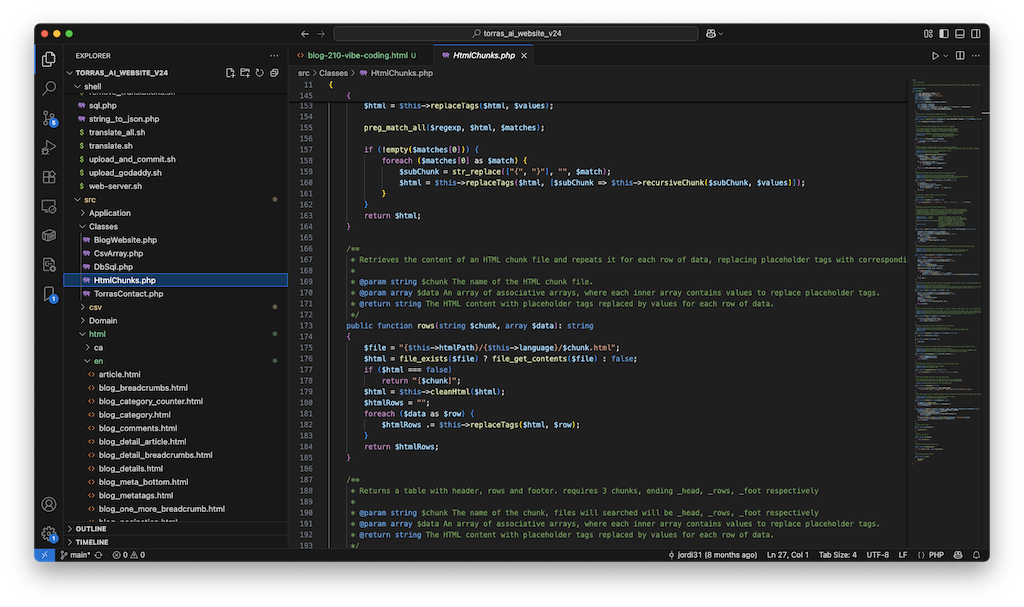
No-Code is Dead. Low-Code is Dying. The Future is Vibe Code
Let's be honest — no-code was exciting when it first showed up. It promised a world where anyone could build apps without writing a single line of code. Drag, drop, connect a few blocks, and voilà! instant software.
But in reality, it didn't take long to hit the limits. The moment your app needed a little more logic, a slightly more complex integration, or something outside the predefined templates—you were stuck. And then what? You had to call in a developer to patch things up with code. So much for “no-code.”
Low-code came in as the next iteration. A bit more flexibility, a bit more power. You could drop in custom logic where needed, which gave it a longer shelf life. But the problem was the same: it still relied on restrictive platforms, still generated bloated code under the hood, and still locked you into ecosystems that don't age well. You saved time up front, but paid for it later in tech debt and maintenance nightmares.
Now, a shift is happening—and it's not incremental. It's transformational. Vibe Coding changes everything.
Instead of clicking around menus or configuring endless UI widgets, you simply tell the AI what you want.
“Build me a dashboard that shows weekly revenue by region. Add filters for sales reps, and send a Slack alert if any region drops below 80% of the average.”
That's it. The system understands your intent and generates code. Not some black-box abstraction, but real, working code that you can inspect, edit, and build on. Frontend, backend, database—done. Instantly.
You don't need to “learn the platform.” The interface is your own words. The speed and power of this approach are hard to ignore.

This is not about replacing developers. It's about redefining what developers actually do.
In a vibe-coded workflow, developers shift from manual code typing to guiding the AI: refining prompts, validating logic, testing assumptions, and shaping architecture. The human isn't removed—they're elevated. Less time writing boilerplate. More time thinking critically, creatively, strategically.
You still need skill. But it's a different kind of skill. It's not syntax mastery—it's clarity of intent, precision in communication, and a strong product mindset.
Let's face it—no-code tools now feel like toys.
Useful for MVPs, sure. Maybe for internal dashboards. But beyond that, they break.
Low-code tries to stretch further, but it ends up caught between being simple and being powerful—and often fails at both. The more you try to customize, the more you're fighting the tool instead of building the product.
Vibe Coding removes that friction. You're no longer bound by the limitations of a visual UI or the rigidity of a prebuilt template. You're working directly with ideas, turning them into software through language, iteration, and fast feedback.
The new development loop isn't “design, build, deploy.” It's “describe, generate, refine.”
You don't wait days or weeks to test an idea. You try it, tweak it, and move forward—all within minutes.
And that's the real power. You're not just building faster. You're thinking faster. Exploring more. Testing assumptions. Shipping smarter.
So what now?
If you're still investing heavily in no-code tools for anything beyond basic automation, it's time to ask yourself:
Will this still work when my use case evolves? Or am I locking myself into a tool that solves today's problem while creating tomorrow's limitation?
If you're building internal tools with low-code platforms, consider this:
Are you really saving time, or just trading immediate convenience for long-term complexity and vendor lock-in?
Because here's the truth: the AI isn't coming. It's already here.
Vibe Coding is not a futuristic concept—it's a practical, daily workflow for people and teams who want to move fast, break fewer things, and focus on solving real problems.
I'm not saying you'll never write code again. But I am saying this: The way we write code is changing. And the ones who adapt early will have a massive advantage.
And yes—this very website was built with Vibe Code.
I developed it using PHP, SQLite, Bash shell scripts, AppleScript, Python, and JavaScript—integrating automatic translation, voice transcription, image generation, and a set of local agents that interact with my Mac. It even syncs automatically with the webserver and GitHub, so every update is frictionless. No templates, no boilerplate—just iterating through prompts and refining what the AI gave me. That's the power of Vibe Coding in action! In fact, as you might guess, this very article was written with the assistance of AI.
Curious? Let's talk. I'll show you what Vibe Coding looks like in action.
It's not a trend. It's the new normal.





